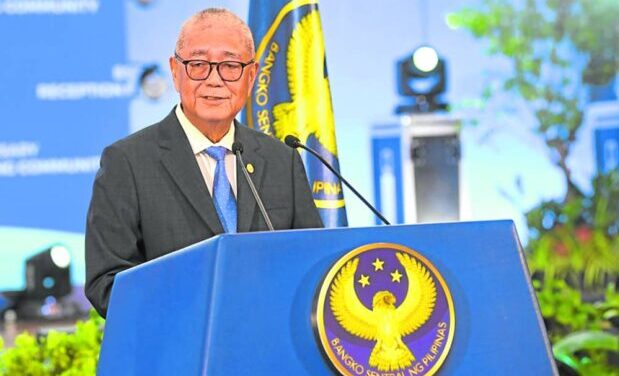
There is a possibility that the Bangko Sentral ng Pilipinas (BSP) will start its easing episode in the first half, said Governor Eli Remolona Jr. But at the same time, he said monetary authorities were still wary of risks that may derail the inflation outlook.
“It’s possible, but not likely,” Remolona said in a press chat on Saturday when asked about the likelihood of a rate cut in the first semester.
Despite inflation easing back to within the target in December last year, the BSP said it deemed it necessary to “keep monetary policy settings sufficiently tight until a sustained downtrend in inflation becomes evident.”
At its last meeting for 2023, the powerful Monetary Board kept the BSP’s policy rate unchanged at 6.5 percent, the tightest in 16 years.
Speaking to reporters, Remolona said that “we like the trend” of price growth so far.
Strong labor market
For HSBC Research, the local labor market has so far withstood the high interest rate environment that tends to crimp business expansion activities, as Filipinos take advantage of the booming digital space to find work.
Such was the case for the entire Association of Southeast Asian Nations, HSBC said in an emailed report to journalists, with consumption in the region staying resilient either because of rising wages or growth in labor force participation.
“What may be helping labor to buck the monetary trend are the ingenious ways people are finding work,” the Bank said.
“For instance, the Philippine economy is currently in a ‘labor boom’ with many leveraging the digital space to enter the gig economy—a thriving component in the country’s large informal sector,” it added.
A tight monetary policy can increase unemployment as high borrowing costs have the effect of discouraging companies from raising cash for business expansion, including hiring activities.
Jobless rate
But latest government data showed there were 1.83 million Filipinos who were either jobless or out of business in November 2023, down from 2.09 million recorded in October.
That translated to an unemployment rate of 3.6 percent, down from 4.2 percent in the preceding month. This was the lowest reading since state statisticians adopted a new definition of “unemployment” in 2005.
The easing of joblessness happened amid an increase in jobseekers in the country. November 2023 data showed 51.47 million people were part of the nation’s labor force, which represents people at least 15 years old who actively looked for work during a period.
That was equivalent to a labor force participation rate of 65.9 percent in November, higher than October’s 63.9 percent.
HSBC said the robust labor market “doesn’t mean that monetary policy isn’t working.”
“Backed by a strong labor market, this momentum in consumption should strengthen further in H2 2024 once inflation moderates further and as Indonesia, Singapore, and the Philippines unclip their monetary pegs,” the Bank said. INQ

